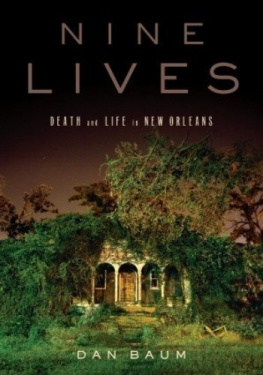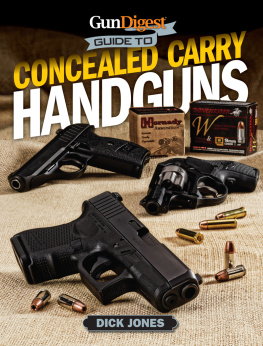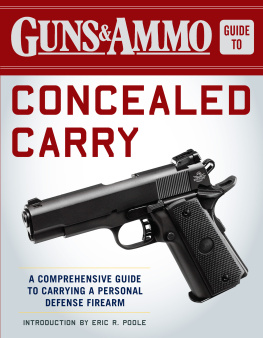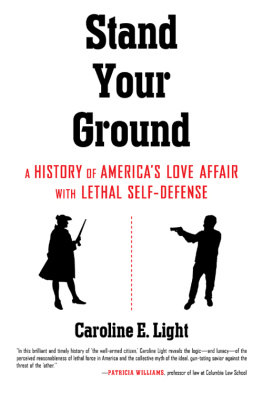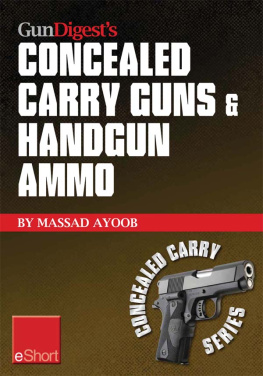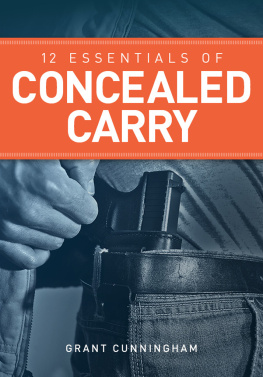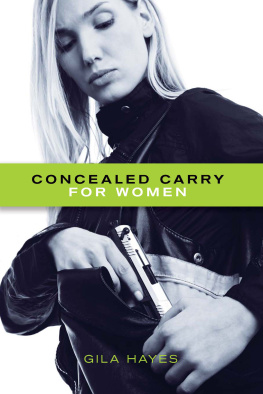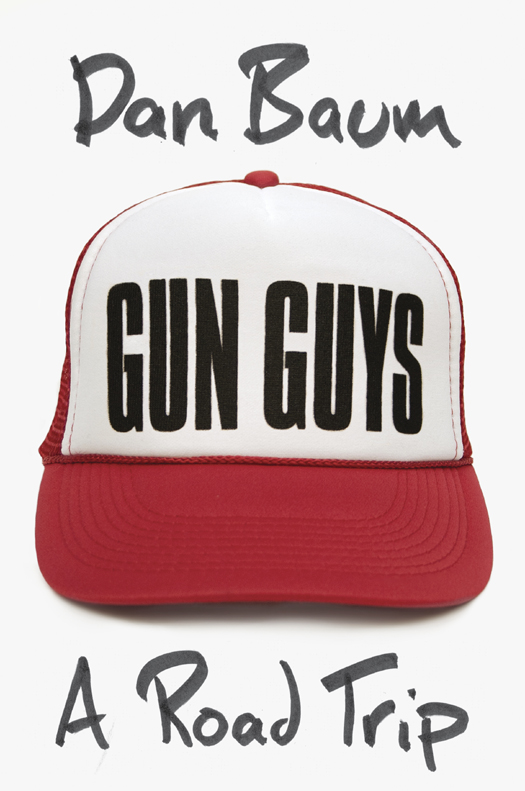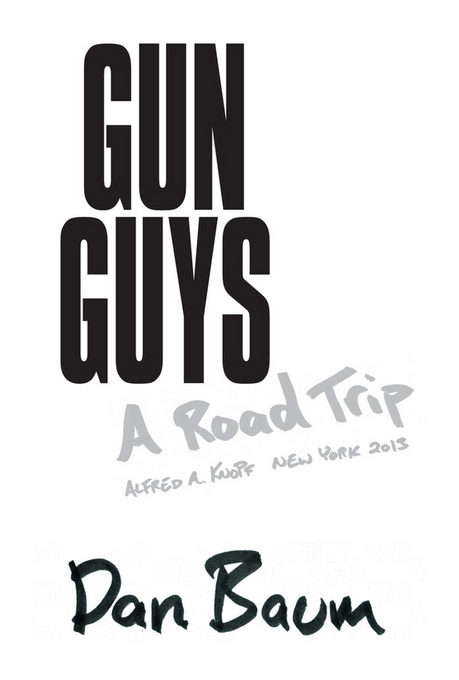
THIS IS A BORZOI BOOK
PUBLISHED BY ALFRED A. KNOPF
Copyright 2013 by Dan Baum
All rights reserved. Published in the United States by Alfred A. Knopf, a division of Random House, Inc., New York, and in Canada by Random House of Canada Limited, Toronto.
www.aaknopf.com
Knopf, Borzoi Books, and the colophon are registered
trademarks of Random House, Inc.
Portions of this work were originally published, in a different form, in Harpers Magazine (August 2010) and online as a Kindle Single titled Guns Gone Wild (September 2011).
Grateful acknowledgment is made to Steve Lee for permission to reprint an exerpt from I Like Guns from I Like Guns by Steve Lee (November 2005). http://ilikeguns.com.au/. Reprinted by permission of the artist.
Library of Congress Cataloging-in-Publication Data
Baum, Dan.
Gun guys : a road trip / Dan Baum. First Edition.
pages cm
eISBN: 978-0-307-96221-8
1. Firearms ownersUnited States. 2. Firearms ownership
United States. 3. FirearmsSocial aspectsUnited States. I. Title.
HV8059.B38 2013
683.400973dc23 2012028767
Jacket design by Jason Booher
v3.1
For my brother, Andy
I like guns I like the way they look
I like the shiny steel and the polished wood
I dont care if theyre big or small
If theyre for sale, Hell, I want em all
I like guns, I like guns, I like guns.
I dont really get all the fuss
Why theyre trying to take guns off of us
Cause I aint going to shoot anyone
No one shoots at me cause Ive got a gun
I like guns, I like guns, I like guns.
Steve Lee, from his 2010 CD, I Like
Guns, which also includes the songs
Ill Give Up My Gun, Gun Shy
Dog, and She Dont Like Guns
CONTENTS
PROLOGUE: BIG BANG
Dick Cavett: I always wanted a Luger. The Luger is a sexy object; there is something about that design that is genius and appealing.
Randy Cohen: We dont have any say in the objects we find seductive.
On the public radio show Person Place Thing, February 15, 2012
W ithin days of arriving at summer camp, it was clear Id be forever consigned to right field, ignored by quarterbacks, left jiggling and huffing in the rear during capture the flag. At five, I was the youngest kid ever at Sunapee: a pudgy, overmothered cherub amid a tribe of lean savages. Though Id begged to follow my brothers to camp, my first week in Bunk 1 was a fog of humiliations large and small. I knew nothing of baseball, tits, or rock and roll; I was quick to tears; I wet the bed. At the end of the first week, I feigned illness for the raw relief of the cool, sympathetic touch of the nurses hand on my forehead.
At the edge of the woods loomed a mysterious monolith that was both exciting and vaguely disturbing: a giant white boulder neatly cracked in two. It must have stood five feet highmuch taller than my head. The two sides lay just far enough apart that a person could slip between them, and I occasionally saw bigger boys disappearing along the path through the rockit appeared to be some kind of portal.
One hot day in the second week of camp, Bunk 1s counselor led the ten of us through. The broken rock faces sparkled in the sunlight, and as we stepped in, a thick mantle of cool air enveloped us. I was disoriented for a moment, as though Id entered into another dimension. Then the boy in front of me moved, the boy behind me shoved, and we emerged onto a sparsely wooded hillside.
The ground sloped gently away, through white birch saplings, to a wooden platform floating on a sea of ferns. On the platform stood a big man with his fists on his hips. We trotted down the path and clattered aboard. Five urine-stained mattresses lay at the big mans feet. On the mattresses lay rifles.
Real guns! It was 1961, and, like many kids, Id seen lots of gunfights on TV. Id played cowboys with Mattel cap pistols and ambushed friends with primary-colored squirt guns. These rifles, though, were long and serious-looking, their burnished wood warmly reflecting the dappled sunlight. The big man, a crew-cut Rutgers footballer named Hank Hilliard, scooped up a rifle and opened its bolt with a slick-click that I felt in my spine. He pointed to the various parts and spoke their names, extending blunt fingers to show how to line up the sights. He sternly repeated the range rules. Then he eenie-meenied five of us to lie on the mattresses and warned us not to touch the rifles until he gave the go-ahead.
I lay on my side, hands clasped between my knees, gazing at the steel barrel two inches in front of my eyes: MOSSBERG 340 KA NORTH HAVEN , CONNECTICUT .22 SHORT LONG OR LONG RIFLE . I cannot remember the names of my neighbors grown children or the seventh dwarf, but to this day I can summon every detail of that rifle and its metallic, smoky, chemical aroma: guns.
A cartridge plopped onto the mattressslender shiny brass with a rounded gray tip. Pick up your rifles, Hank boomed, and I hoisted the Mossberg into my arms. Across the far end of the clearing stretched a board fence on which hed tacked sheets of white paper, each with a black dot at the center. Open your bolts. I worked the knob up and back. Slick-click. Load. I poked the nose of the cartridge into the breech and mashed it forward with my thumb. Close your bolts. I pushed the bolt forward and locked it down, the most determined thing Id ever done. Aim and fire at will.
The kid next to me grunted as his rifle popped off. The other three shot nervously in the next two seconds. I ignored them. For days, Id enviously watched these boys swing bats and tennis rackets, throw spirals, and execute high dives. Now I tuned them out and squeezed the world down to my front sight, a bead-topped post looping tighter and tighter around the black dot. The rifle gave a slight jump against my shoulder and a distant crack. Hank dropped another cartridge on the mattress.
We each shot five bullets and, after an elaborate ceremony of opening bolts and clearing chambers, pelted across the clearing to retrieve our targets. One kids was completely untouched. The rest had two or three holes, the shots scattered widely.
All five of mine were inside the black dot, which I now saw was divided into five concentric rings. Several of my bullet holes touched; one nicked dead center. When I handed the target to Hank, he rocked his head back in surprise. Damn, he breathed, touching each hole with a pencil point. Thirty-six out of fifty. He handed back the target and gave me my first-ever man-to-man look. Nice shootin, Tex.
Was that my personal Big Bang? Did I get hooked on guns because I discovered I was good at shooting at precisely the moment I was experiencing my first feelings of masculine inadequacy? Is this why Ive spent a lifetime carrying around an enthusiasm that has made me feel slightly ashamed? Or did I just think the guns were cool and fun, the way other kids fell for fishing rods and ant farms? All I knew at the time was that the rifle range replaced the nurses office as my refuge. By day I was forced to trudge through ball sports with the rest of my bunkmates, but when the shadows grew long and we were allowed an elective, I invariably chose riflery. I learned to breathe evenly, listen to my heartbeat, and let the shot go between beats, when the muzzle was steadiest. I learned to place the pad of my index finger against the trigger and squeeze so slowly that the shot came as a surprise. I came to love the snap of the rifle, the rich aroma of burned cordite, the magical geometry of a bullets razor-straight trajectory connecting to a tiny, distant point. I even came to enjoy the faint aroma of ancient urine soaked into cotton batting, because that, too, was part of the Camp Sunapee rifle-range experience. Ten targets of twenty-five-plus points won me a tiny bronze Pro-Marksman medal that first summer and a National Rifle Association patch to sew on my melton wool camp jacket.


